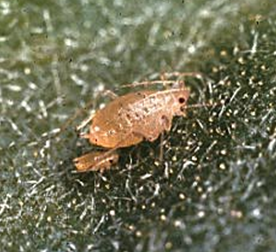
R. Chris Williamson, UW Turf and Ornamental Specialist
Revised: 4/25/2004
Item number: XHT1020
Aphids can be persistent and serious pests in the greenhouse. Because of their high reproductive capability and resistance to numerous insecticides, they can be difficult to control. Aphids are sucking insects that damage greenhouse crops by causing curling and distortion of young, succulent growth. The mere presence of aphids, their shed skins, and honeydew can reduce the aesthetic quality and subsequent salability of various greenhouse crops. Unfortunately, aphids are frequently detected when plants are in flower, at or near the time of sale, when effective control is most difficult to achieve.
Aphids are small (less than 1∕8 inch long), soft-bodied, pear shaped insects with long legs and antennae. There are many types (species) of aphids found in greenhouses. The two most common species include the green peach aphid, Myzus persicae and the melon or cotton aphid, Aphis gossypii. Other species that greenhouse growers may encounter include the gray cabbage aphid, pale green foxglove aphid, and the reddish-brown chrysanthemum aphid. Proper identification is important in order to select the most effective management option. Aphids are most commonly known for their “tailpipes” or cornicles at the tip of their abdomen. Cornicles can be used to effectively identify an aphid species.
Plants Attacked and Damage: Aphids feed by inserting their stylet-like, sucking mouthparts directly into the phloem and removing plant sap. Young leaves may become stunted, curled and twisted when populations are high. Aphids excrete a sugary plant substance (called honeydew) as they feed. Black, soot-like fungi (called sooty molds) can grow on the honeydew, often resulting in reduction of photosynthesis.
Life Cycle and Biology: Most types of aphids found in greenhouses do not mate. All aphids present are females which give birth to live nymphs (immature aphids). There is no egg stage. Young aphids resemble adults. An adult female can live up to one month during which time she may give birth to 60-100 live nymphs. Migratory winged aphids may appear when a colony becomes overcrowded or when the food supply is limited.
Regular, weekly scouting of aphids is needed to detect aphids early before crops are in flower. Yellow sticky cards will only attract winged aphids. Thus, focus on use of random plant selections of susceptible crops and cultivars to detect wingless nymphs. Look for whitish-cast skins and honeydew.
Control: Chemical control and biological control (natural enemies) are available for managing aphids in greenhouses. Unfortunately, aphids are difficult to control with insecticides for various reasons. Control failures may be due to poor spray techniques, inadequate coverage, or high pH in the spray tank. Different strains of aphids may be resistant to different insecticides. Green peach aphids are particularly resistant to organophosphates, carbamates, and synthetic pyrethroids. Systemic products may be more effective, because aphids ingest large quantities of plant sap. Thorough coverage of the underside of leaves is required for contact products, and is most difficult when plants are in flower. Two applications of contact sprays may be needed for effective control. Also, many insecticides can cause spotting of blossoms and thus they must be used with caution during flowering.
Temperature and humidity may be manipulated in order to provide a more favorable environment for the introduction of natural enemies (predators, parasitoids, and pathogens). Familiarize yourself with IPM scouting techniques and develop a regular monitoring program before attempting biological control. Understand the specific environmental requirements of the natural enemy to be released. Most control failures result when natural enemies are released too late, at too low a rate, or at a time of the year when temperature or photoperiod may adversely affect the natural enemy.
Additional Images
Download Article

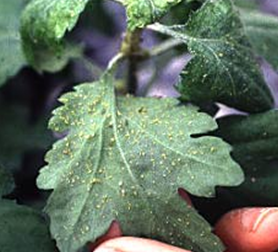




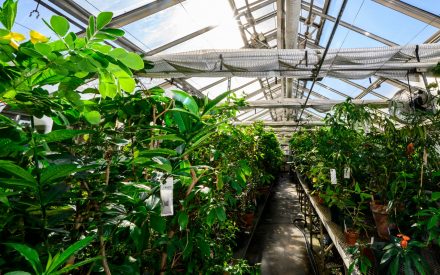 Managing Thrips in Greenhouses
Managing Thrips in Greenhouses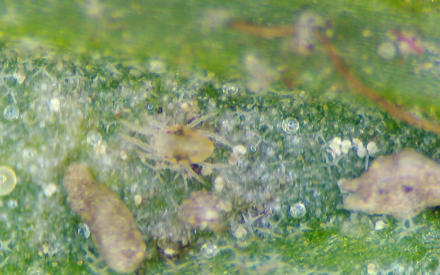 Managing Mites in Greenhouses
Managing Mites in Greenhouses Cucumber Mosaic
Cucumber Mosaic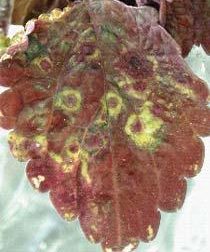 Impatiens Necrotic Spot
Impatiens Necrotic Spot


